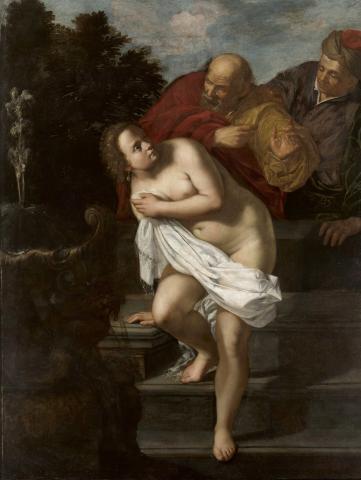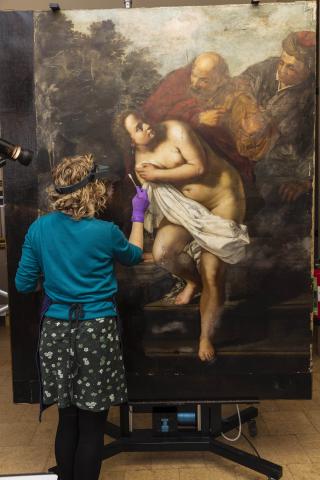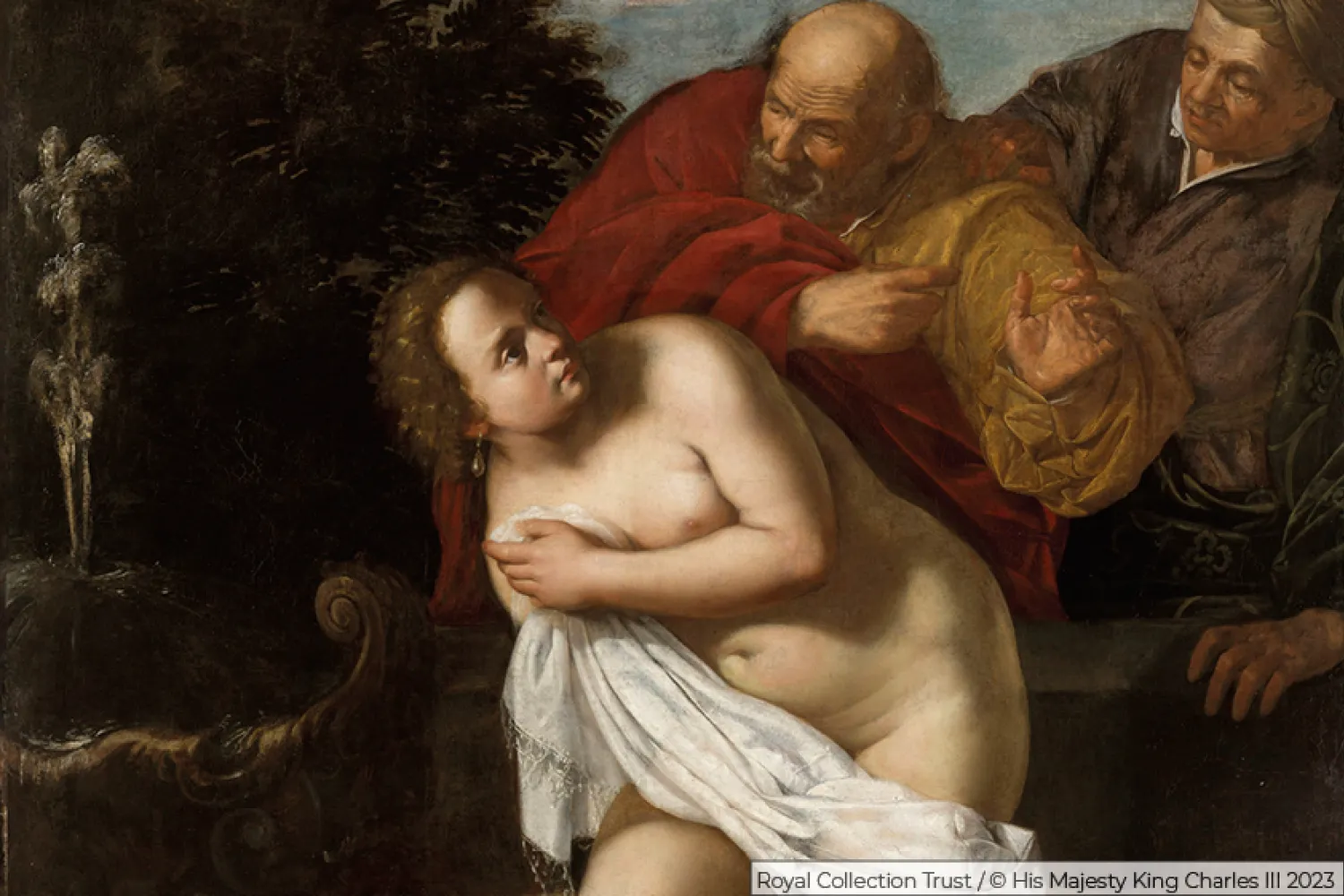Breadcrumb
Team led by Niko Munz rediscovers major 17th-century artwork
A Royal Collection Trust research project led by art historian Dr Niko Munz, Junior Research Fellow at Christ Church, has resulted in the rediscovery of a major 17th-century artwork. The formerly 'lost' painting, Susanna and the Elders, has now been reattributed to Italian artist Artemisia Gentileschi (1593–1653).

For more than a century Susanna and the Elders was stored at Hampton Court Palace, having been misattributed to an anonymous artist of the 'French School'. That was until Dr Munz and a team of curators at the Royal Collection Trust reappraised the work as part of a research project focused on tracing paintings lost following the execution of King Charles I in 1649. The team was able to reattribute the artwork to Artemisia Gentileschi – one of the very few female painters to be known throughout Europe during the 17th century who is described by the Royal Collection Trust as 'the greatest female artist of her generation' and by The Art Newspaper as 'arguably Europe’s greatest female Old Master.'
The Royal Collection Trust team found Gentileschi's painting in very poor condition. According to the Trust, the conservation process 'included the painstaking removal of centuries of surface dirt, discoloured varnish and non-original paint layers to reveal the original composition; removing canvas strips that were added to enlarge the painting sometime after its creation; relining the canvas; retouching old damages; and commissioning a new frame.'
It was during this extensive conservation work that a 'CR' ('Carolus Rex') mark was found on the back of the canvas, confirming that Susanna was once in Charles I’s collection. It is now understood that the artwork was prepared in the late 1630s while Gentileschi worked alongside her father Orazio at the court of Charles I and his wife, Queen Henrietta Maria.

Dr Munz detailed one of his team's most striking findings: 'One of the most exciting parts of this painting's story is that it appears to have been commissioned by Queen Henrietta Maria while her apartments were being redecorated for a royal birth. Susanna first hung above a new fireplace, probably installed at the same time as the painting, emblazoned with Henrietta Maria's personal cipher "HMR" ("Henrietta Maria Regina"). It was very much the Queen's painting.'
In an interview with The Art Newspaper, Caravaggio expert Sheila Barker shed light on the evidence supporting the claims made by Dr Munz and his team: 'The attribution is unassailable. Niko Munz and the Royal Collection's curators cross-checked a number of different kinds of evidence, including inventory descriptions, provenance records, and the collector's mark on the painting, in addition to making stylistic comparisons. They even carried out a material analysis that detected the presence of one of Artemisia's preferred pigments: lead tin antimony yellow.'
We'd like to congratulate Dr Munz and the Royal Collection Trust on this remarkable discovery, which expands our understanding of one of the very few women artists to be formally recognised in the 17th century.
To learn more about Artemisia Gentileschi's life and art, and how her work was rediscovered and restored, view the Royal Collection Trust's film about Susanna and the Elders and read Dr Munz's article in The Burlington Magazine.
A special display of works by Artemisia and Orazio Gentileschi is included in a visit to Windsor Castle until 29 April 2024. Tickets and visitor information can be viewed here.
Learn more about Dr Munz and his research via his Christ Church page.
Other Christ Church news




